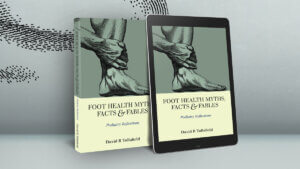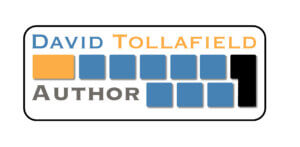A Common Cause of Heel Pain
Having heel pain and being a foot specialist helps with being objective about treatment. Bruised heels are a common cause of heel pain without talking about fasciitis, spurs, or tibial tendon dysfunction. This is specific to ONE condition alone. That said, bruised heels form part of a range of conditions, which are often called syndromes. Heel pad pain is caused by the impact of the heel hitting the ground with a repetitive force. READ MORE…
Thanks for reading – ‘Heel Pain due to a bruised heel’ by David R. Tollafield
You can now read Foot Health Myths Facts & Fables by David R. Tollafield, published on Amazon Books.
Modified January 2025
Published by Busypencilcase Communications & Publications. Est. 2015 for ConsultingFootPai




Thank you! After hours of scrolling through the internet, I finally understand what my heel pain is and how best to treat it. I have ordered the heel cups, but need to investigate further the best orthotics for my biomechanics.
I have seen that taping is beneficial in the recovery period, so will also try that.
As a fanatical runner, I need to do everything possible in an attempt to get back out there!
Thanks again for such a precise and informative post. CFP response: thanks Kate I am pleased to hear that the information has provided some value. Please tell your friends and if there other questions please write. My contact information is on the home page.
Hi and thanks for the article! This might be what I have right now in both my feet/heels. I’ve read alot about fat pad syndrome and plantar fasciitis but none of them exactly fits the bill. Especially the part where you mentioned that you could press pretty hard right under the heel without feeling any pain is similar to what i experience. Also i don’t have any sharp pain during mornings or anything like that. It’s an aching dull feeling and i wouldn’t exactly call it painful. If I have to put a finger on where I feel it the most it has to be on calcaneus bone just at the back of the heel, the rounded part where it stops being the “leg” and starts being the foot, just in the middle of that (sorry I’m not a native English speaking person). Where i press that spot i can sometimes be painful but not alot. Was it the same for you? I couldn’t really tell from the text. CFP response: An idea Henrik why don’t you send me a picture of your foot marked where you find it hurts. I think this would be more helpful and I can respond. A side view and back view in good light make for easier observation. Please use busypencilcasecfp@gmail.com
Henrik,
Your explanation is fabulous and exactly where I feel it. It’s the calcaneus bone (at the side) and the tendons nearby are also tender.
I have now rested for 2 weeks and am thinking about attempting a run tomorrow, but I’m nervous in case I inflame it all again. I really don’t want to go back to the start again!
I have had some acupuncture and that seemed to help. Additionally, I have realised that icing it is actually accentuating the pain now and not assisting it.
Henrik, fingers crossed we get a similar result to the original article and that it starts improving in the next couple of weeks.